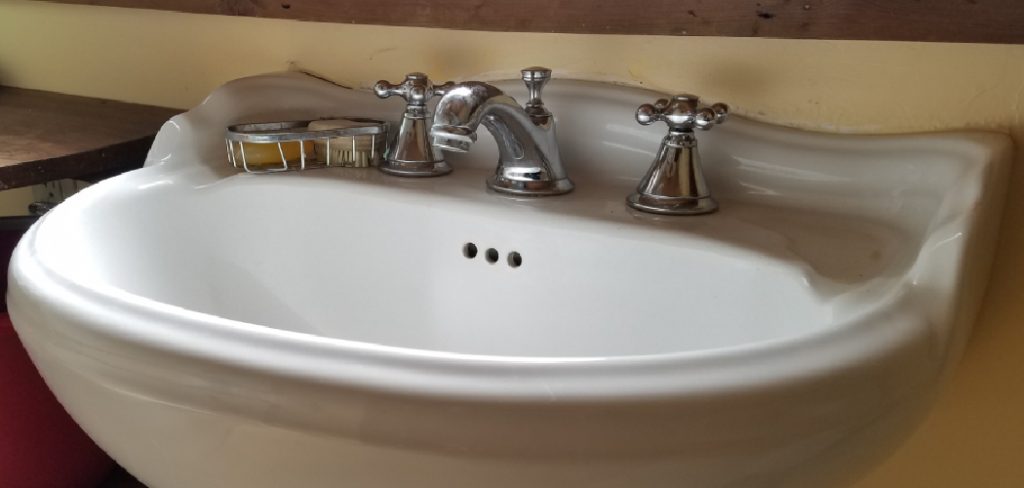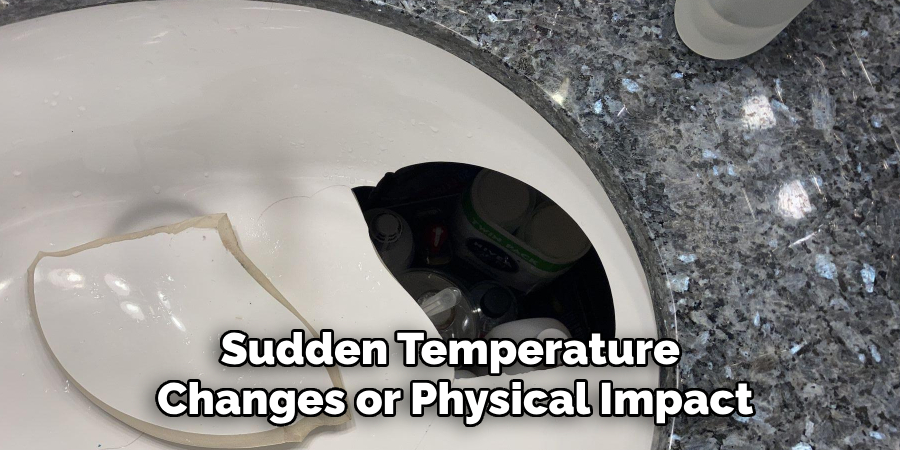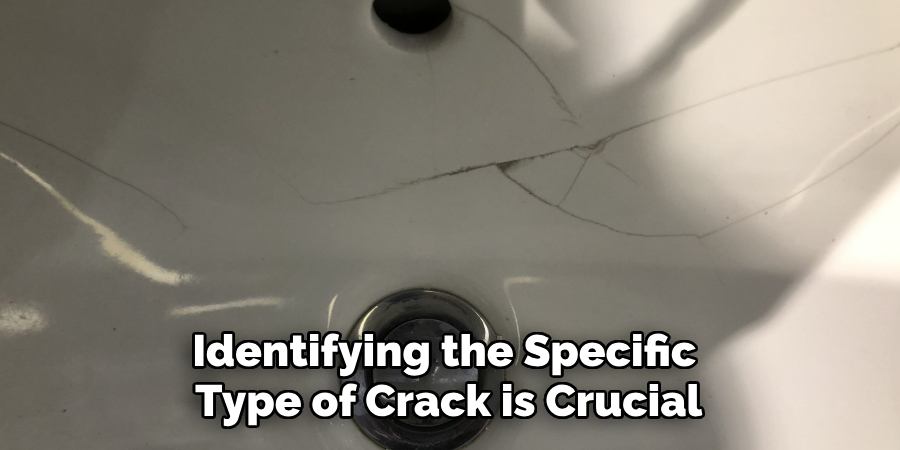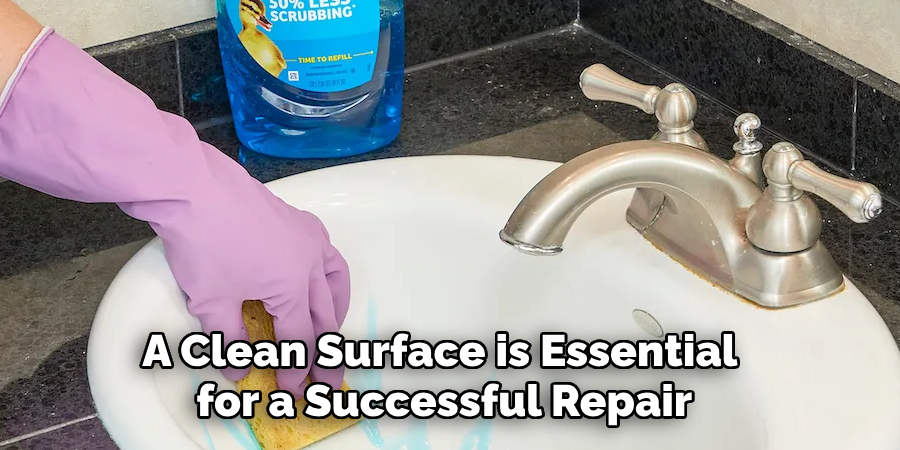Accidents happen, and sometimes porcelain sinks can develop unsightly cracks that not only affect their aesthetic appeal but also their functionality. Fortunately, repairing a cracked porcelain sink is a manageable task that you can accomplish without the need for professional help. By following a few straightforward steps, you can restore your sink to its former glory, saving both time and money in the process. In this guide, we will walk you through how to fix a crack in porcelain sink, ensuring a long-lasting solution that blends seamlessly with the original finish.

Common Issues with Porcelain Sinks
Porcelain sinks, while known for their classic beauty and durability, can still encounter a variety of issues over time. One common problem is staining, especially if the sink comes into frequent contact with substances like tea, coffee, or hair dye, which can leave unsightly marks. Additionally, porcelain is prone to developing chips and cracks if heavy objects are accidentally dropped on the sink’s surface.
These damages not only detract from the sink’s aesthetic appeal but can also compromise its integrity if left unaddressed. Maintaining the glaze and preventing dulling is another concern, as harsh cleaning chemicals may wear it down, leading to a less shiny appearance. Lastly, rust formation around the sink’s edges or drain can occur, often resulting from prolonged contact with water. Understanding these common issues can help in taking preventative measures and maintaining the sink’s longevity.
Understanding Porcelain Sink Cracks

Porcelain sink cracks can occur due to a variety of reasons, often related to sudden temperature changes or physical impact. The material itself, while durable, is not entirely immune to stress. Hairline cracks may develop as a result of thermal shock, which happens when extremely hot water is poured into a cold sink or vice versa. On the other hand, larger cracks or fractures are typically the result of a heavy object being dropped onto the sink.
Over time, even small and seemingly insignificant cracks can expand, leading to more extensive damage if not promptly addressed. It’s important to evaluate the extent of the damage; minor surface cracks may simply be cosmetic and non-threatening, while deeper cracks could indicate structural issues that compromise the sink’s functionality. Identifying the type and severity of the cracks is crucial for determining the appropriate repair method and ensuring the sink’s longevity.
Types of Cracks in Porcelain Sinks
Understanding the different types of cracks that can occur in porcelain sinks is essential for selecting the correct repair approach. Here are some common types of cracks:
- Hairline Cracks: These are very fine cracks that usually occur on the surface of the sink. They are often caused by minor temperature fluctuations or negligible impact and may or may not penetrate the glaze. Hairline cracks are typically cosmetic and do not affect the sink’s functionality.
- Craze Cracks: Also known as crazing, these are networks of fine lines that can develop over time due to the natural aging process of porcelain, as well as exposure to temperature changes. Unlike hairline cracks, craze cracks may spread across larger areas of the sink but generally do not compromise its structural integrity.
- Spider Cracks: Resembling a spider web, these cracks radiate from a central point and are usually the result of significant impact, such as dropping a heavy item in the sink. Spider cracks can range from superficial to deep, and they may require more intensive repair techniques.
- Thermal Cracks: These develop when there is a sudden change in temperature, such as pouring boiling water into a cold sink. Thermal cracks can vary in size but often start as hairline fractures that may enlarge if not treated promptly.
- Impact Cracks: These are generally larger, more severe cracks caused by a heavy blow. They can severely affect the sink’s structural integrity and often necessitate professional repair or even replacement, depending on the extent of the damage.

Identifying the specific type of crack is crucial, as it influences both the repair method and the materials required to ensure a seamless and durable fix.
When to Repair vs. Replace
Deciding whether to repair or replace a porcelain sink depends on several factors, including the extent and type of damage, the cost of repairs, and the overall condition of the sink. Minor issues like hairline cracks or craze cracks can usually be repaired inexpensively, restoring the sink’s appearance and functionality without the need for a full replacement. Repairs can also be a cost-effective choice when the sink is a unique or vintage model that is difficult to replace.
On the other hand, larger or more severe cracks, such as spider or impact cracks, might render the sink less effective or safe for use. In cases where the sink has multiple issues or the repair costs start approaching the price of a new sink, replacement may be a more practical option.
Additionally, if the sink is outdated or showing significant wear beyond just the cracks, replacing it could refresh the bathroom or kitchen’s aesthetic and increase the overall value of your home. Ultimately, consider the extent of the damage, potential repair costs, and whether a new sink could better meet your needs before making a decision.
10 Effective Methods How to Fix a Crack in Porcelain Sink
Cracks in a porcelain sink can be unsightly and concerning, especially if left unattended. The good news is that you don’t always need professional help to fix these issues. With the right tools and techniques, you can restore your sink to its former glory. Whether you’re a DIY enthusiast, a homeowner looking to save some money, or even a plumber wanting to expand your skill set, this guide will show you how to successfully repair those pesky cracks.
1. Assess the Damage
Before you begin any repair work, it’s crucial to assess the extent of the damage. Small hairline cracks might only require surface treatment, while deeper cracks could need more comprehensive repair. Understanding the severity helps you choose the most appropriate method and material for the job.
2. Clean the Area
A clean surface is essential for a successful repair. Use a gentle cleaner and a soft cloth to remove any dirt, grime, or soap residue from the area around the crack. This ensures better adhesion when you apply a filler or repair compound.

3. Use Epoxy Putty
Epoxy putty is excellent for filling and sealing cracks in porcelain sinks. Once mixed, it forms a moldable substance that hardens over time. Simply apply the putty into the crack, smooth it out with a damp finger, and allow it to cure as per the manufacturer’s instructions.
4. Try a Porcelain Repair Kit
Many home improvement stores sell porcelain repair kits specifically designed for fixing cracks. These kits usually contain a filler and a touch-up glaze that matches the color of your sink. Follow the included instructions for best results.
5. Apply a Surface Sealant
For minor cracks, a surface sealant might be all you need. These sealants are easy to apply with a brush or sponge and dry to a clear, hard finish. They protect the crack from moisture, preventing further damage.

6. Use Super Glue for Hairline Cracks
Super glue can be surprisingly effective for sealing hairline cracks. Gently squeeze the glue into the crack and allow it to dry completely. This method is quick and works best on small, non-structural cracks.
7. Consider a Two-Part Epoxy
For more significant damage, a two-part epoxy provides a robust solution. Mix the components according to the instructions, apply to the crack, and allow ample time to cure. This option offers excellent durability and a seamless finish.
8. Paint Over the Repair
Once the crack is filled and sealed, you may notice a color difference between the repair and the rest of the sink. High-quality appliance paint can help blend the repaired area with the rest of your sink, providing a uniform appearance.
9. Prevent Future Cracks
Prevention is better than repair. Avoid dropping heavy objects into the sink and use a rubber mat to cushion impacts. Regular maintenance and gentle cleaning also help prolong the life of your porcelain sink.
10. Know When to Call a Professional
If the crack is extensive or affects the sink’s structural integrity, don’t hesitate to call a professional. A skilled plumber or sink repair specialist will have the expertise and tools to handle more complex repairs safely.
By using these strategies, you can fix most cracks in your porcelain sink, extending its life and maintaining its aesthetic appeal.
Conclusion
In conclusion, repairing a cracked porcelain sink is a manageable task that can save you both time and money while preserving the aesthetic and functionality of your bathroom or kitchen. By accurately identifying the type and extent of the crack, you can select the most effective repair method from the various options available, such as epoxy putty, porcelain repair kits, or surface sealants. Additionally, implementing preventive measures can help avoid future cracks, ensuring the longevity and durability of your sink. Thanks for reading, and we hope this has given you some inspiration on how to fix a crack in porcelain sink!
Specialization:
- Master of wheel-throwing, hand-building, and advanced glazing techniques
- Focus on creating both functional pottery and decorative art pieces
Recognition:
- Celebrated by collectors and art enthusiasts for creating one-of-a-kind pieces that blend artistry with functionality
- Participates in local and national exhibitions, earning accolades for his innovative designs and craftsmanship
Passion:
- Deeply committed to exploring and pushing the boundaries of ceramic artistry
- Continuously experiments with new materials, firing techniques, and artistic concepts to evolve his craft
Personal Philosophy:
- Believes in the transformative power of art, aiming to evoke emotions and connections through his ceramic creations
- Advocates for sustainability in ceramics, using eco-friendly materials and practices whenever possible


